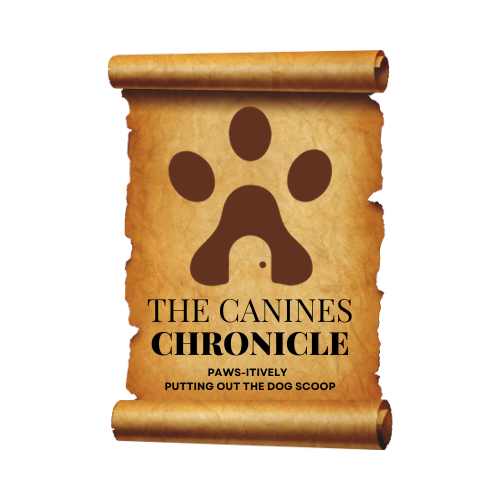Introduction: Understanding the Importance of Exercise for Dogs
Running around the yard, chasing their own tail, fetching a ball – there’s no denying that dogs love to be on the move. However, these bouts of energy are more than just adorable antics; they perform a crucial role in your furry friend’s overall health and well-being.
Role of Physical Activity in a Dog’s Health and Well-being
Just as we humans venture to the gym or strap on our running shoes to maintain our health, exercise is a key ingredient in a dog’s recipe for a healthy life. It helps keep them physically fit, yes, but that’s merely scratching the surface. Exercise lends a helping paw in managing their weight, keeping their joints flexible, improving their cardiovascular fitness, and even honing their mental agility. Plus, it’s an A+ way of alleviating any pent-up energy, thus reducing any behavioural issues. Who knew the health report card of our dogs depended on something as simple (and fun) as playtime?
Breaking Down Common Misconceptions About Dog Exercise
Let’s bust some myths here, folks. Exercise for your pooch is not a one-size-fits-all concept. It’s not as simple as letting your dog out in the yard and hoping for the best. It’s not about the length of time as much as the quality of activity. And it’s certainly not about pushing your dog to its limits.
The Relationship Between Exercise and a Dog’s Lifespan
A long, healthy life for our dogs – isn’t that the dream we all share? Well, the secret to their longevity might lie in their exercise routine. Evidence has shown that regular, appropriate exercise can go a long way in extending a dog’s lifespan and enhancing the quality of their years.
Factors Influencing a Dog’s Exercise Needs
When it comes to dishing out an exercise regimen for dogs, there isn’t a nifty calculator that spews out a precise quota. That’s where we get to play detective and consider various factors like their age, breed, size, health status, and more.
How a Dog’s Age Impacts Exercise Requirements
A two-month-old Labrador puppy is likely to be the picture of energy, but a ten-year-old Beagle may prefer a slow stroll around the park. Just as humans’ exercise needs adapt over the years, so do our dogs’. Puppies and younger dogs typically require more exercise than adult dogs, while seniors might need a light routine coupled with careful supervision.
Effect of Breed and Size on the Quantum of Exercise
Big or small, slim or stout, every breed of dog has its own idiosyncrasies which impact their exercise needs. For example, Jack Russells and Border Collies are pretty high up on the activity spectrum and need a bucketful of exercise, while Bulldogs and Basset Hounds are a little low on the energy scale, thus needing less.
Understanding the Influence of Your Dog’s Health Status
Taking into account your dog’s health status while planning their exercise regime is as essential as asking about allergies before sharing your chocolate chip cookies. Certain health conditions might require you to alter their activity schedule accordingly. For instance, dogs with arthritis might benefit from regular gentle exercise, while those with heart conditions might need to take it easy.
How Much Exercise Does Your Dog Really Need?
Finding the sweet spot for your dog’s exercise needs could be a bit of a Goldilocks situation. Too little, and your pooch might get restless. Too much, and it might lead to injuries. Here’s a guide for each phase of a canine’s life.
Decoding the Exercise Needs of Puppies
Puppies, with their endless energy, are just like toddlers hopped up on a sugar rush. They need lots of short bursts of activity interspersed with quality sleep time. A common rule of thumb suggests five minutes of exercise per month of age up to twice a day. But, remember to play it safe and avoid strenuous activities to protect their developing bodies.
Exercise Recommendations for Adult Dogs
For adult dogs, a couple of daily walks along with some playtime or additional activity can usually do the trick. Generally, doggos need at least an hour of exercise each day, but active breeds may require much more.
Understanding Exercise Needs for Older Dogs
Senior dogs might not pounce on a ball like they used to, but that doesn’t mean they should skip out on exercise! Gentle activities like a leisurely stroll around the neighborhood or a game of fetch can aid with weight management and keep age-related issues at bay.
Deciphering Signs of Inadequate or Excess Exercise
Too much of a good thing can be bad, and the same holds true for exercising your pup. However, how can we tell if we’re getting it just right?
Signs that Your Dog is under Exercised
An under-exercised dog may exhibit excessive barking, chewing, digging, and other destructive behaviors. It’s their way of saying, “Hey, I’ve got loads of excess energy here, and I don’t know what to do with it!”
Detecting Overexercise in Your Dog
On the flip side, if your dog is constantly tired, panting excessively, or reluctant to move about, it might be symptomatic of being overworked. There’s a fine line between fatigue and exhaustion, and knowing the difference can keep your dog healthy.
Addressing Problems Related to Inadequate or Excess Exercise
If your pup falls into either of these categories, it might be high time to revisit their exercise routine. Of course, it doesn’t hurt to involve your vet in this conversation; they are, after all, like the personal trainers for our pets.
Best Practices for Regular and Healthy Exercise for Your Dog
So, you’ve got the ‘why’ and ‘how much’ down pat. Now, let’s move on to the ‘how’. Providing structured as well as fun exercise is the way to go!
Structured Exercise: Walking and Running with Your Dog
Leash up and head out with your dog for a daily walk or run. Walking isn’t just about physical exercise; it’s their time for sniffing and exploring, so mentally stimulating too! For safety, always keep an eye on their body language and avoid extreme temperatures.
Playtime: Making Exercise Fun for Your Dog
Not all exercise has to be a structured routine. Make it fun for your dog by engaging them in a game of fetch or tug-of-war. Not only with your dog churn out some energy but it’s a super way to strengthen your bond.
Positive Reinforcement: Rewarding Your Dog for Staying Active
Positive reinforcement is like the cherry on top of the exercise sundae for your dog. Reward their efforts with treats, praises, or some additional playtime. Soon enough, they’ll associate exercise with some much-desired Lovin’ from you!
How to Deal with a Dog that Doesn’t Want to Exercise
“But what if my dog wouldn’t rather chase its tail than a ball?” you ask. Fret not, there are ways to encourage even the most stubborn couch potatoes to get on the move!
Investigating the Possible Reasons
Your dog might refuse to exercise due to various reasons, like illness, pain, or even boredom. A lethargic dog warrants a vet check-up just to be sure it’s not a signal for something serious lurking beneath the surface.
Seeking Professional Help: When to Consult a Vet
If your dog’s aversion to exercise persists after trying all tricks in the book, it’s time to bring in the big guns and consult your vet. They can provide valuable insights, pinpoint any underlying issues, and guide you on the best course of action.
Strategies to Encourage Your Dog to Exercise
Enthusiasm is contagious, so if you’re excited about exercise, chances are your dog will pick up on that too. Integrating exercise into playtime, introducing new games or toys, rotating walking routes for variety – keep tweaking up your strategies until you locate your dog’s exercise happy place.
Summary: Balancing Your Dog’s Exercise for Optimum Health
Finally, we’ve crossed the finish line of our canine exercise marathon. What a journey it’s been!
Recap of Key Points Discussed
We’ve delved into why exercise is a VIP (Very Important Pooch) necessity, the factors influencing a dog’s exercise needs, the telltale signs of insufficient or excessive exercise, and some pretty handy, pawsome exercise strategies.
Other Considerations to Keep in Mind
Remember, each dog is a unique fur-ball of joy and their exercise requirements might differ from ‘standard’ recommendations. Keep observing them for cues and adapt, like they do to our mood swings.
Formulating a Customized Exercise Plan for Your Dog
All the knowledge you’ve gained through this journey should empower you to craft an exercise plan that’ll have your furry friend wagging their tail in joy. But remember, Rome wasn’t built in a day, and your perfect dog exercise schedule won’t be either. Have patience and keep fine-tuning your approach.
Frequently Asked Questions
What if My Dog Still Seems Exhausted After Regular Exercise?
A little fatigue post-exercise is normal, but if Rover is regularly hitting snooze or if there’s a drastic change in their behavior, it’s vet o’clock. Don’t overlook persistent lethargy – it’s always better to be safe than sorry.
How Can I Entertain My Dog on Days When We Can’t Go Out for a Walk?
Keeping your pup entertained indoors is not as difficult as it sounds. You can organize a mini treasure hunt for them, play hide and seek, set up an indoor obstacle course, or even get them a new chew toy. Newton would be proud – Proof that action and reaction can happen even inside four walls!
What to Do When My Dog Shows No Interest in Playful Activities or Toys?
Doggy boredom is a thing! Try rotating their toys to keep them interested, introducing challenging puzzles, or using interactive toys. If none of these spur any interest, it might be an indication of a bigger issue and might require a visit to the vet.
And there you have it – your complete guide to exercising your dog. Remember, making sure that your dog gets the right amount of exercise is just one small part of being a pet parent but it’s one which carries a huge payoff for your dog’s long term health — and their tail won’t stop wagging either! Exercising with your dog isn’t a chore; it’s an opportunity to bond, to experience joy, and to imitate their unabashed zest for life. So, what are you waiting for? Unleash the fun!


Leave a Reply